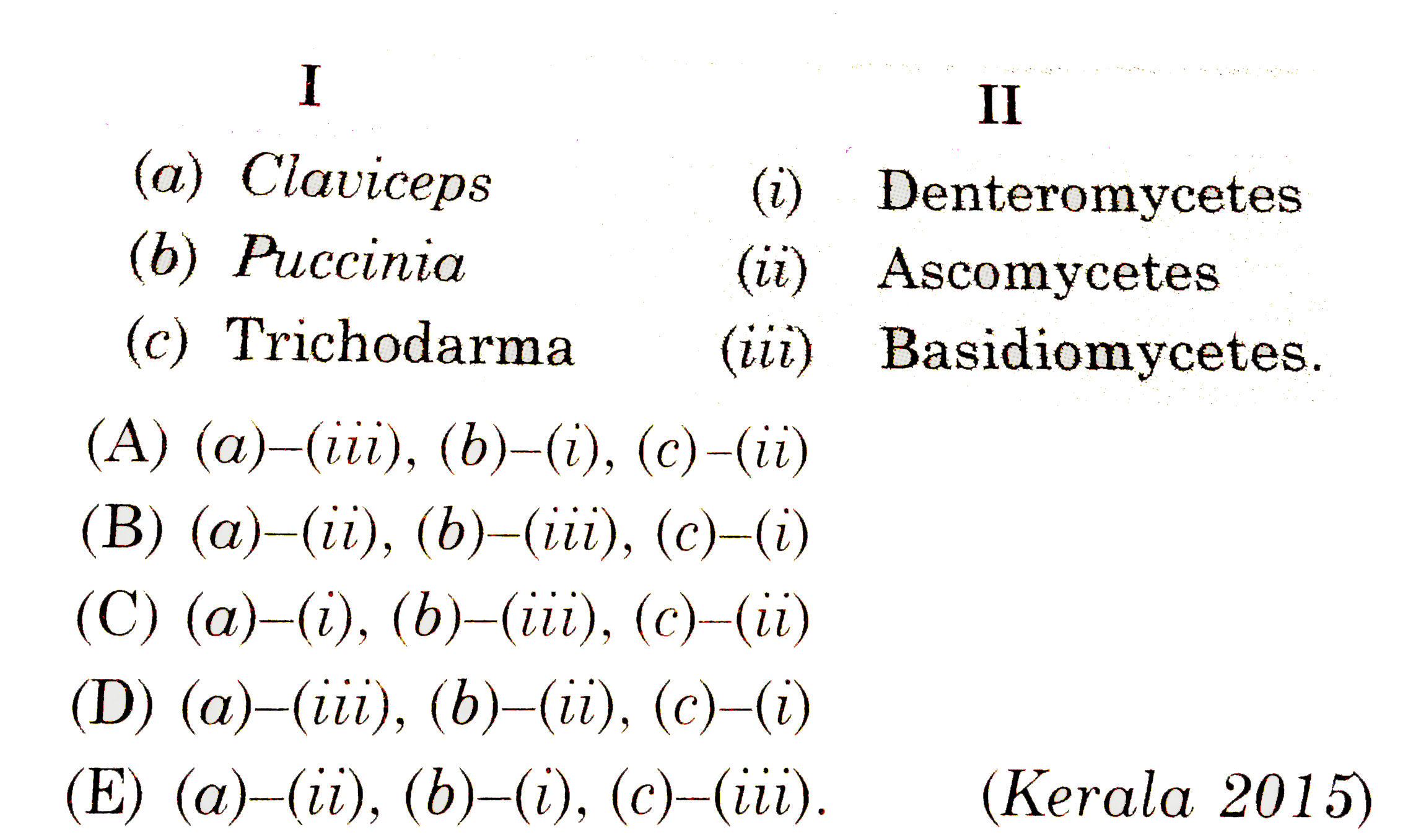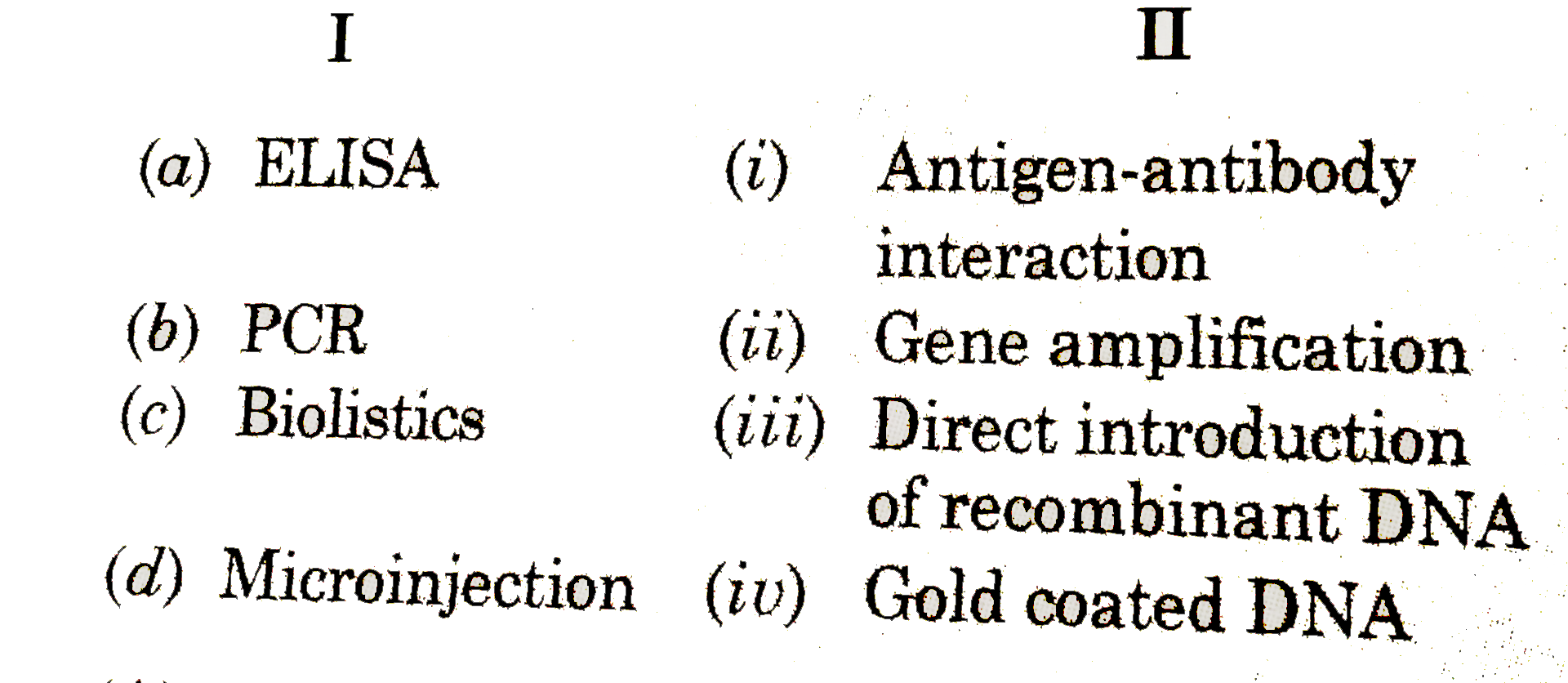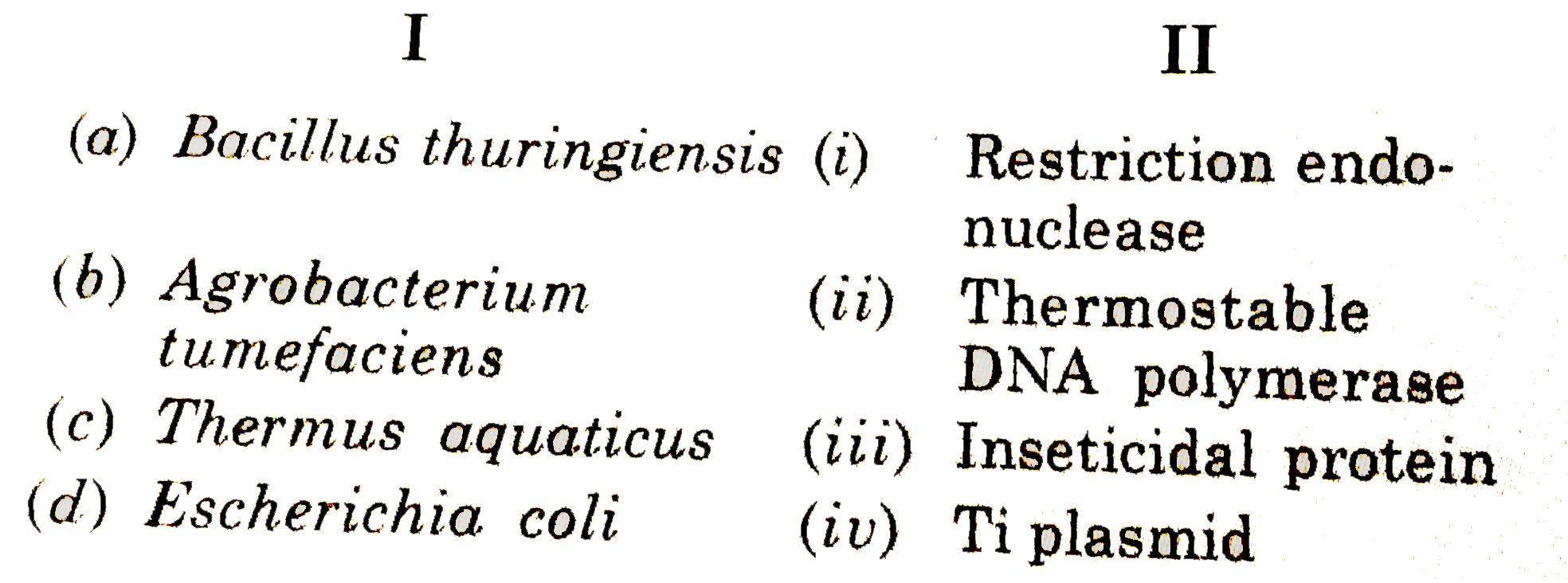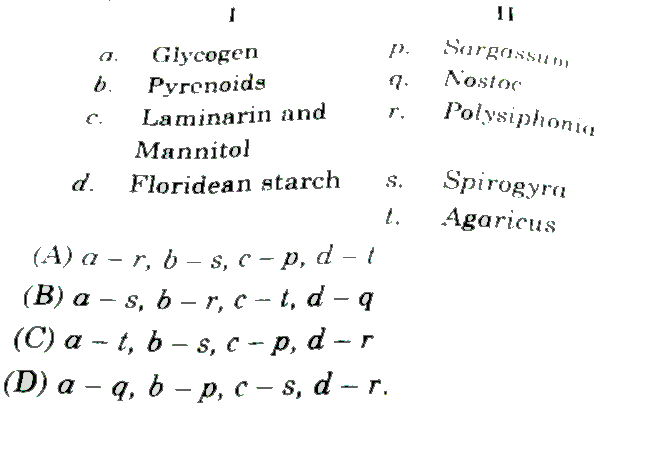match the columns and choose the correct option
a. helicase
b.DNA ligase
c. Primase
d. aminoacyl t-RNA synthetase
i.joins DNA fragment ii.synthesis of RNA iii.unwinds DNA helix iv. Activation of amino acid
a(iii), b(iv), c(ii), d(i)
a(iii), b(i), c(iv), d(ii)
a(iii), b(i), c(ii), d(iv)
a(iv), b(iii), c(ii), d(i)
To solve the matching question, we need to identify the correct function of each enzyme listed in column A and match it with the appropriate description in column B.
1. Identify the function of helicase (a):
- Helicase is an enzyme that unwinds the DNA helix during DNA replication. It separates the two strands of DNA, allowing replication to occur.
- Match: a - iii (unwinds DNA helix)
2. Identify the function of DNA ligase (b):
- DNA ligase is responsible for joining DNA fragments together. It is particularly important in sealing gaps between Okazaki fragments on the lagging strand during DNA replication.
- Match: b - i (joins DNA fragments)
3. Identify the function of primase (c):
- Primase synthesizes short RNA primers that are necessary for DNA replication. These primers provide a starting point for DNA synthesis.
- Match: c - ii (synthesis of RNA)
4. Identify the function of aminoacyl t-RNA synthetase (d):
- Aminoacyl t-RNA synthetase is an enzyme that activates amino acids and attaches them to their corresponding tRNA molecules, which is crucial for protein synthesis during translation.
- Match: d - iv (activation of amino acid)
Final Matches:
- a - iii (unwinds DNA helix)
- b - i (joins DNA fragments)
- c - ii (synthesis of RNA)
- d - iv (activation of amino acid)
Summary of Matches:
- a (helicase) → iii (unwinds DNA helix)
- b (DNA ligase) → i (joins DNA fragments)
- c (primase) → ii (synthesis of RNA)
- d (aminoacyl t-RNA synthetase) → iv (activation of amino acid)
- Helicase is an enzyme that unwinds the DNA helix during DNA replication. It separates the two strands of DNA, allowing replication to occur.
- Match: a - iii (unwinds DNA helix)
- DNA ligase is responsible for joining DNA fragments together. It is particularly important in sealing gaps between Okazaki fragments on the lagging strand during DNA replication.
- Match: b - i (joins DNA fragments)
- Primase synthesizes short RNA primers that are necessary for DNA replication. These primers provide a starting point for DNA synthesis.
- Match: c - ii (synthesis of RNA)
- Aminoacyl t-RNA synthetase is an enzyme that activates amino acids and attaches them to their corresponding tRNA molecules, which is crucial for protein synthesis during translation.
- Match: d - iv (activation of amino acid)
- a - iii (unwinds DNA helix)
- b - i (joins DNA fragments)
- c - ii (synthesis of RNA)
- d - iv (activation of amino acid)
- a (helicase) → iii (unwinds DNA helix)
- b (DNA ligase) → i (joins DNA fragments)
- c (primase) → ii (synthesis of RNA)
- d (aminoacyl t-RNA synthetase) → iv (activation of amino acid)
Topper's Solved these Questions
Similar Questions
Match the column and choose the correct option

View SolutionMatch the columns and choose the right option

View SolutionMatch the columns and choose the right option

View SolutionMatch the columns and choose the right option

View SolutionMatch the columns and choose the right option

View SolutionMatch the columns and choose the right option

View SolutionMatch the columns and choose the right option

View SolutionMatch the columns and choose the appropriate option.

View SolutionMatch the columns and choose the appropriate option

View SolutionMatch the columns and choose the appropriate option

View Solution
